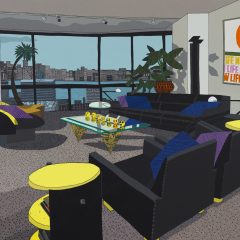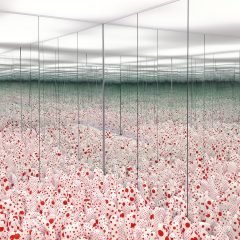Threads and Voices; Behind the Indian Textile Tradition, Laila Tyabji, ed. (Marg Publications, Mumbai: 2007), ISBN 8185026793
India has an extraordinarily rich textile tradition but this is not a book about beautiful fabrics. Rather it tells stories of the village craftsmen (spinners, weavers, printers, dyers and embroiderers) who produce hand-worked textiles today. Eleven studies from eight states across India examine the conflict they face between individual creativity and market forces, traditional designs and international taste and emphasize the economic motivation behind their craft.
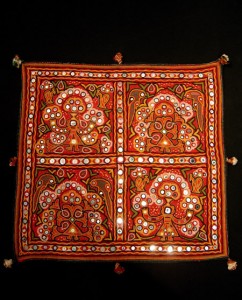
While the textiles are anonymous the craftsmen (largely women) here are all named individuals and all the authors have experience at the most local level of textile production. They come from the fields of design, anthropology, textile history, marketing and folklore; several work for NGOs devoted to encouraging local crafts. One of them, discussing the challenges particular to work in rural villages, told of drying lengths of fabric that were walked on by camels and played with by piglets and about a newborn pigeon that fell into a tray of printing paste then walked over a sari laid out to dry. The studies follow the changes brought about by technology, from sewing machines to computer-aided design, and the irony that modern technology makes hand-work more valuable.
This book should appeal to a much broader audience than that for traditional books on textiles. The very-readable accounts address women and their empowerment through craft, micro-production and distribution, international trade, and the place of local traditions in the face of modern life and international demands. It is handsomely designed and fully-illustrated with color images of the craftspeople and their work.
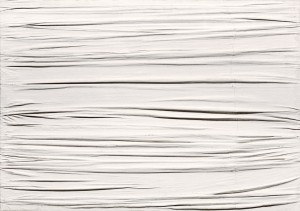
Germano Celant Manzoni (Skira, Milan and Gagosian Gallery, New York: 2009), ISBN 978-88-572-0050-7
Those of us who studied post WWII art entirely in the United States have had an extremely parochial education and this book is a useful step in our remedial education. Piero Manzoni’s very brief artistic career (1955-1963) has barely been represented in U.S. museums and his reputation here has largely been based on book and magazine illustrations of his Merda d’arista (Artist’s Shit), 1961 and/or Socle du Monde (Base of the World), 1961. This has not only presented an extremely limited view of Manzoni’s work, but it isolated him from the dynamics of the European art world and intellectual currents in which the artist was actively involved.
Germano Celant embeds his discussion of Manzoni within the concerns of artists across Europe, the U.S. and Japan at the end of the Second World War. He looks at the demarcation between art worlds in Europe and the U.S., the opposition between art based on emotional and personal tendencies versus rational and materialist concerns, the significance of monochrome and the introduction of the body into art, among other topics, and takes account of critical writing, both contemporaneous and later.
In addition to Celant’s article, the bulk of the book (more than 250 pages which include full-page, color illustrations of Manzoni‘s work) contains a chronology from 1933-1963; this contains parallel events in Manzoni’s life and work, events in the art world at large (with some bias towards Italian artists) and historical events. It is a useful companion to the similarly-international view of performance-related art that Paul Schimmel covered in his LAMoCA exhibition and catalog, Out of Actions; between performance and the object 1949-1979 (1998). The book should be invaluable to all students of art of the period for the chronology alone, which is illustrated with news photos, pictures of artists, artworks and ephemera from exhibitions, photos of artists’ studios and exhibition installations. The book, which includes a bibliography of writing by and about the artist and a listing of exhibitions of Manzoni’s work, is very beautifully designed and printed.
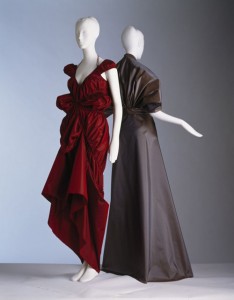
Valerie Steele and Patricia Mears Isabel Toledo; Fashion from the Inside Out (Yale University Press with Fashion Institute of Technology, New York: 2009), ISBN 978-0-300-183-0
Isabel Toledo creates extraordinary clothing that will challenge anyone interested in three-dimensional design. Toledo describes herself as a dressmaker rather than a designer, and she clearly thinks through the fabrics’ potentials and pushes them beyond traditional uses. After all, she uses flat materials to create three-dimensional constructions that must also accommodate the body and its movements. She does this through extremely-unconventional pattern designs, seams that follow the body’s curves as well as create contrasting straight lines, draping, folding, twisting, cutting, ruching, lining and interlining and a range of other techniques that are briefly described but not discussed in any depth. All the detailed decorative elements in her designs arise from construction techniques rather than applied decoration.
The book, which accompanied an exhibition at the Fashion Institute of Technology, is woefully short of the serious attention to specific works that would be standard fare in catalogs of almost all other fields. It includes a few small sketches of patterns, but Toledo’s construction is so unusual that serious visual analyses of several of her construction methods, supported by step-by-step images or diagrams would have been helpful, as would in-depth descriptions of the sophisticated dressmaking techniques and detailed images of the interiors of the garments, which both authors comment upon but do not illustrate. Toledo’s work has the complexity of architecture where the engineering becomes one with the art, and it deserves more serious treatment.
The two articles may interest readers who care about the workings of the current fashion world, but for anyone interested in the garments as structures the most useful text will be Mears’ single-page discussions of the concepts around which the garments were grouped for exhibition: liquid architecture, origami, suspension, manipulated surfaces, etc. The photographs are stunning but a number of them answer more to the needs of the fashion world, which is interested in atmosphere, than the interests of readers wanting to understand the garments’ actual designs. Despite the fact that I wish this volume offered more scholarly substance, Toledo’s designs are so imaginative and provocative that I know I will return to it again and again, and I recommend it for the visual inspiration it offers.




